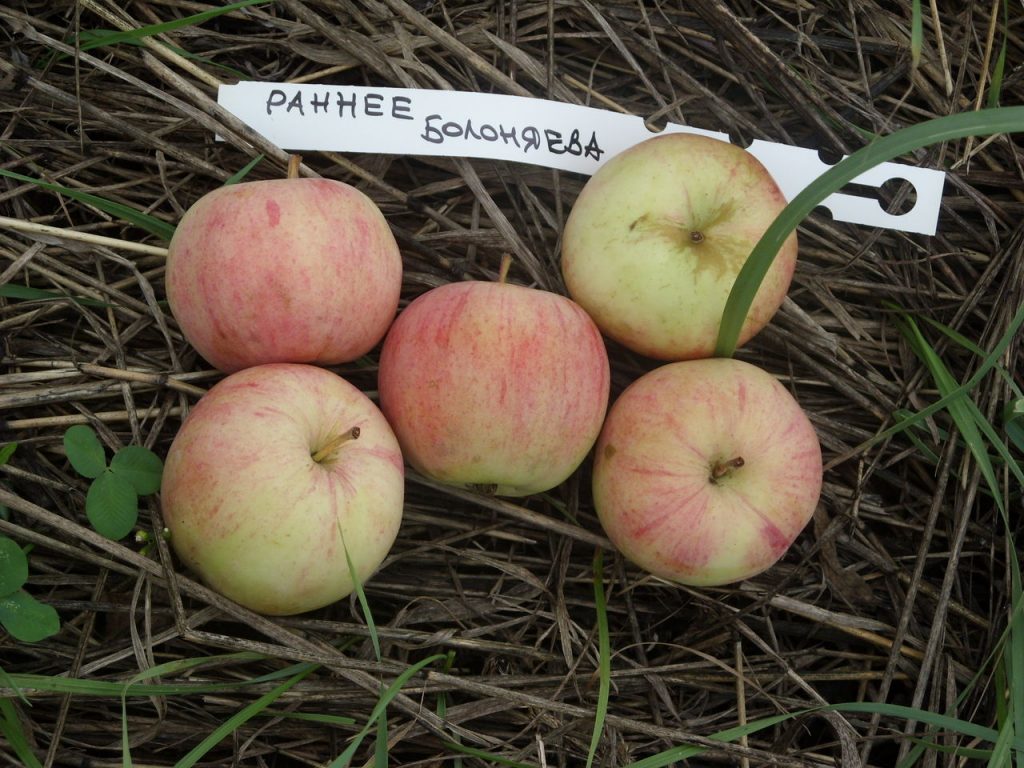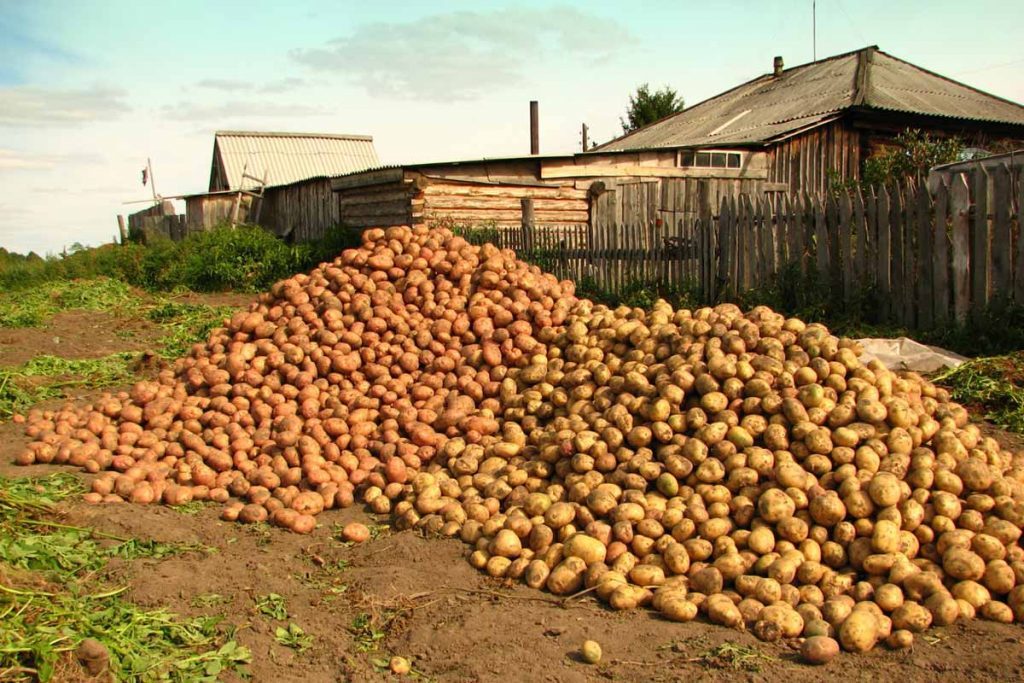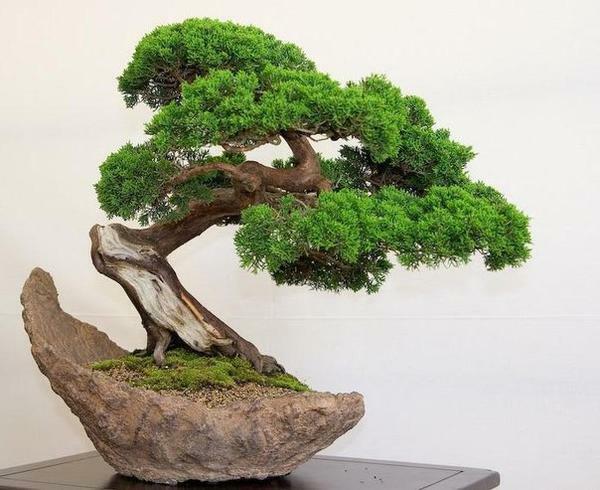 Bonsai is a miniature copy of any natural tree. You can plant bonsai yourself. The main thing - to choose the right plant, so that it feels comfortable in the environment. The technology of growing is not at all complicated, but it requires regular monitoring of the formation, a lot of time and effort. You need to look after bonsai correctly. It is important to create favorable conditions that affect the appearance and growth - illumination, humidity and air temperature, irrigation, soil.
Bonsai is a miniature copy of any natural tree. You can plant bonsai yourself. The main thing - to choose the right plant, so that it feels comfortable in the environment. The technology of growing is not at all complicated, but it requires regular monitoring of the formation, a lot of time and effort. You need to look after bonsai correctly. It is important to create favorable conditions that affect the appearance and growth - illumination, humidity and air temperature, irrigation, soil.
-
- Bonsai: the birthplace of the plant China or Japan?
- What the bonsai tree symbolizes: literal translation
- Bonsai tree: plant species
- Which plants are suitable for bonsai in our climatic conditions
- Bonsai plant and care for it
- How to grow bonsai from seeds at home
- How to care forBonsai at home
- Basic set for growing bonsai
- How many bonsai tree grows from seeds
- How to transplant the bonsai itself: step-by-step guide
- How to grow bonsai( video)
Bonsai: the birthplace of the plant China or Japan?
"Bonsai" in Japanese means "tree in a pot".Many believe that the birthplace of bonsai - Japan. In fact, this art originates in China from 200 BC.E.A few centuries later, the Japanese mastered the cultivation of small trees, perfected it and at the moment it is considered purely Japanese. It was with Japan that the triumphal development of bonsai began on other continents.
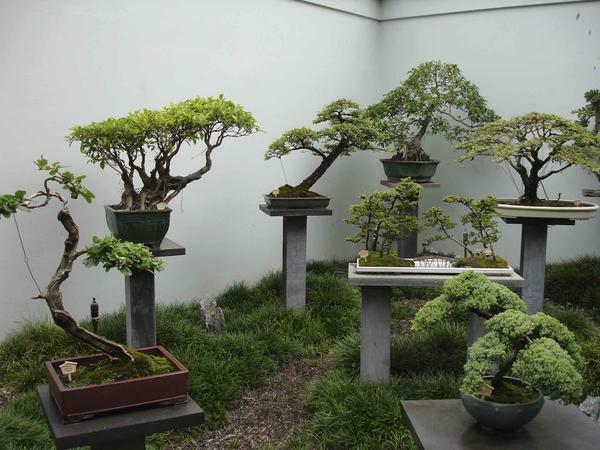 Bonsai started growing in China more than two millennia ago
Bonsai started growing in China more than two millennia ago
Differences of traditional bonsai:
- Strong trunk with a pronounced root system at the base;
- Branches have a clear and distinctive line;
- The trunk with branches is clearly visible through the foliage;
- A clear similarity of bonsai with its kindred in the original.
Ideally, a Chinese tree is an absolute original of a real tree, only in a reduced form.
A pot for bonsai is used with low edges reminiscent of a deep saucer.
What symbolizes a bonsai tree: a literal translation of
From Japanese, a bonsai tree is literally a "miniature tree on a saucer".This means that the plant should be grown in a small space. To create such an unusual plant requires tolerance and painstakingness. Not everyone is allowed to cope with such conditions, because the process of cultivation takes many years.
 Decorative plant symbolizes wisdom and endurance, and its cultivation is a very long and painstaking process.
Decorative plant symbolizes wisdom and endurance, and its cultivation is a very long and painstaking process.
The bonsai tree symbolizes:
- Wisdom;
- Justice;
- Delicacy;
- Exposure;
- Goodwill.
Bonsai is not an ordinary activity. This is a whole art, implying the application of special personal qualities. The philosophy of growing a tree requires great patience, endurance and effort. Due to their longevity, bonsai trees symbolize and reflect the whole history. In this case, the content and appearance speaks for itself - a peeled bark, broken branches, a huge root system.
In Japan, grow bonsai, which is more than a thousand years.
Coniferous plants are valued most of all, because it is this species that symbolizes eternity, compared to the deciduous trees, dropping their foliage every autumn.
Bonsai tree: plant species
The choice of plants for bonsai is huge, but preference is mostly given to coniferous species. Such plant species are durable and more hardy, with small evergreen leaves.
 Some varieties of bonsai can grow in the aquarium
Some varieties of bonsai can grow in the aquarium
Bonsai are distinguished by the main types:
- Have a green view all year round;
- Flowering in spring;
- Actively blossoming in summer;
- Flowering only in autumn;
- Having a characteristic shape of the trunk with branches noticeable after the leaves are shedding.
It's important to remember that bonsai is not an indoor plant. It can take several days to stay in the house, then it starts to ache and suffer from hot dry air.
On the outside, the plant needs protection from rain, sun and wind.
Which plants are suitable for bonsai in our climatic conditions
Before starting the cultivation of bonsai with your own hands, you need to decide which plants are most predisposed to the natural conditions of your area.
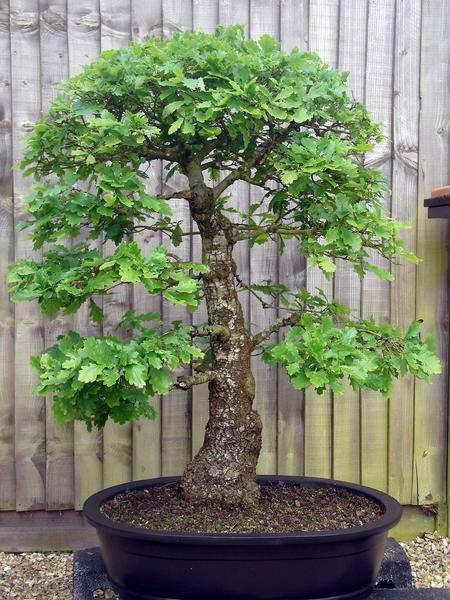 In our climatic conditions it is possible to grow bonsai from oak
In our climatic conditions it is possible to grow bonsai from oak
Bonsai can be grown from:
- Juniper;Pine, tuja or spruce,
- ;
- Lilac ordinary or Hungarian;
- Multiple variety of spiraea;
- Cherries, apples or pears;
- Almonds are low;
- Siberian larch;
- Birch;
- Money tree( plumy);
- of Barbarisa;
- Maple;
- Kalina.
For the cultivation of a miniature tree from scratch in the home, any seed of a simple plant can be used. Wisteria is in particular demand. A fine flower thickly covers the branches, thereby giving a special appeal to the tree. The plant feels well in the room.
Apple tree is a good option for bonsai. With proper care, you can get a beautiful and fruitful decorative tree.
Plant of bonsai and care for it
You can grow miniature trees from both coniferous and deciduous plants.
 To grow a miniature tree, it needs to cut off the top
To grow a miniature tree, it needs to cut off the top
from time to time. The most popular are:
- Olive tree ( European olive).Evergreen bonsai tree in the form of a shrub with annual flowering. Favorable environment with an air temperature of + 5-18 ° C and sufficient light. He likes fresh air. The soil is better to pick up from sand and clay. Watering as it dries.
- Tea tree ( Carmona).The height of an adult tree is up to 10 m. Such an evergreen plant loves warmth and light.
- The elm is a small-leaved Chinese .The most tolerant tree for beginners. The main condition of care is heat, sunlight and moist soil.
- Mix bonsai .Trees of different breeds, caring for them is pretty simple.
It will not be difficult to grow a miniature flower and bonsai from pine, oak, thuja, hardwood, juniper. Such plants are more adapted to our climate. Care for them is not particularly distinguished by some kind of supernatural features. They can be grown from seeds or ready sprouted sprouts brought from the forest.
For the listed plants, deep containers of ceramics are suitable.
Deciduous bonsai after shedding of foliage can be removed to a darker place.
How to grow bonsai from seeds at home
Growing bonsai from seeds on its own is an interesting activity that requires great patience and desire. There is no guarantee that everything will work out the first time, since this process is very long and tremulous.
With proper care, you can grow absolutely any tree from the seed
The bonsai growing process implies:
- Seed treatment for several years. It is more preferable to choose a seed, taking into account the natural climate of your place of residence. Ficus or pine is considered unpretentious.
- Care for the germ. In a small form, bonsai should be periodically ventilated. After the appearance of 4 leaflets, the plant should be dived and after two months begin to feed. Closer to winter, the plant should be removed to the window sill and stop feeding.
- Care for a miniature tree. It is necessary to constantly monitor for sufficient lighting( indoor bonsai) and periodically spray the plant with water. In a few years you can begin the formation of bonsai.
It is important to create a favorable climate for the plant, especially in the early stages of growth.
How to care for bonsai at home
Proper care for bonsai needs to be organized taking into account the variety of the plant, depending on its capriciousness and features.
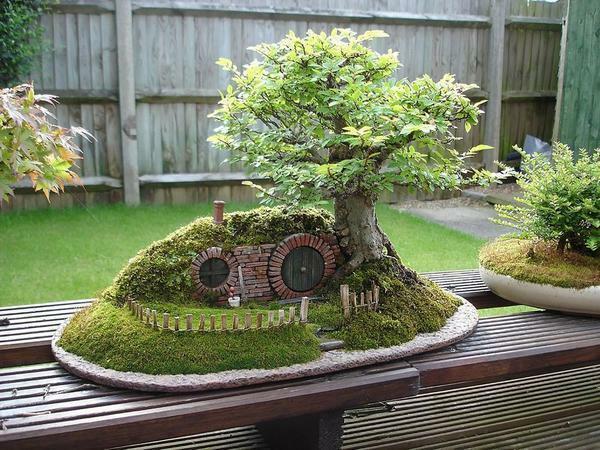 The tree must be grown outdoors, protecting it from wind, rain and excessive sunlight
The tree must be grown outdoors, protecting it from wind, rain and excessive sunlight
Highlights of bonsai care:
- Timely cut the crown of the plant;
- Prepare favorable soil - it is clay, sand, humus and humus;
- Observe favorable temperature conditions, mainly it is + 10-18 ° С;
- Drafts are the main enemy of a miniature tree;
- Avoid direct exposure to sunlight;
- The plant should be watered at a time when the top layer of the soil is completely dry.
Trimming bonsai is necessary all the time, otherwise the usual decorative bush can grow.
The more sunlight, the better the plant adapts to the temperature rise and vice versa.
Basic set for growing bonsai
For the cultivation of a miniature tree, you can purchase a special kit and do not spend energy on preparing a special soil or choosing a suitable pot.
 The bonsai growing kit can also include a working tool for tillage and plant care.
The bonsai growing kit can also include a working tool for tillage and plant care.
The bonsai growing kit includes:
- Instruction;
- Pot;
- Primer;
- Plant Seeds;
- Fertilizer.
Some kits have in their picking wire and a special pallet. In principle, "any whim for your money."
You can buy the finished set in the store or order online. In this case, you can at the same time choose any seeds at your discretion.
How much a bonsai tree grows from seeds
The growth period of bonsai is determined according to the type of tree. To grow such a miniature tree from the seed of the house will require a lot of effort and patience.
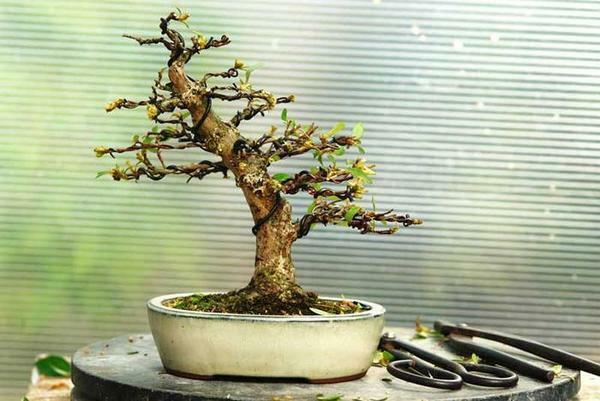 Tree formation is performed a few years after seeding
Tree formation is performed a few years after seeding
Periods of bonsai growth:
- Seed grooming. This process, on average, takes several years.
- Caring for the germ. From this moment the process becomes more interesting.
All the following time bonsai grows and pleases its creator. In Japan, grow such plants for centuries and millennia, passing the tree by inheritance. Some bonsai trees live up to 4 thousand years.
The most durable - coniferous bonsai.
Today it is possible to purchase a ready-made sprout and immediately plant it. In this case, you can save a few years. But the guarantee is that this is actually the very tree, not the dwarf forgery, you will not get. The cost of a bonsai tree depends on the type of plant and how old it is. Seeds are inexpensive - from a few rubles apiece. And for comparison, a bonsai maple with a height of 30 cm costs about 1900 rubles, and the same plant 65 cm - 11900 rubles.
How to transplant the bonsai itself: the step-by-step guide
Simultaneously with the transplanting of the tree, the soil and the bowl are replaced. Transplant bonsai follows approximately every 1-2 years, as evidenced by its appearance and growth process.
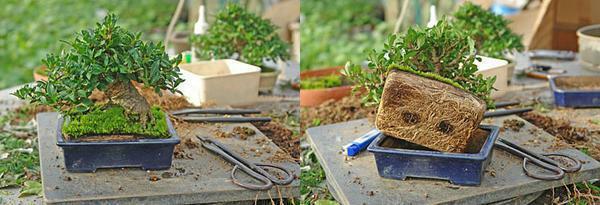 Before replanting a plant, it should not be watered. Soil must be dry and easy to separate from the roots.
Before replanting a plant, it should not be watered. Soil must be dry and easy to separate from the roots.
Bonsai transplant stages, Beginners Guide:
- Drainage holes should be reinforced;
- The roots of the tree should be gently peeled off the soil;
- Bonsai put into a new medium and straighten the roots;
- With scissors, cut off the roots about 1/3 or back from the edge of the bowl by 2 cm;
- Plant the densely place, pressing the soil with your fingers.
Transplant plants of up to 5 years of age are needed every year in the spring. The soil changes to a new one every time. The first forming tree trimming in about 5 years. Bonsai, whose age of 10 years should be transplanted once every 10-15 years.
Bonsai in new soil can not be succumbed to bright sunlight during the first two weeks.
How to grow bonsai( video)
Bonsai has gained wide popularity in countries around the world. I could not help noticing such art lovers of needlework. Miniature trees are made from various stones of gems or beads. The process of making bonsai and stones is quite creative and challenging, requiring care with the use of imagination. Recreating the original in this version hides a mystery and special energy.

